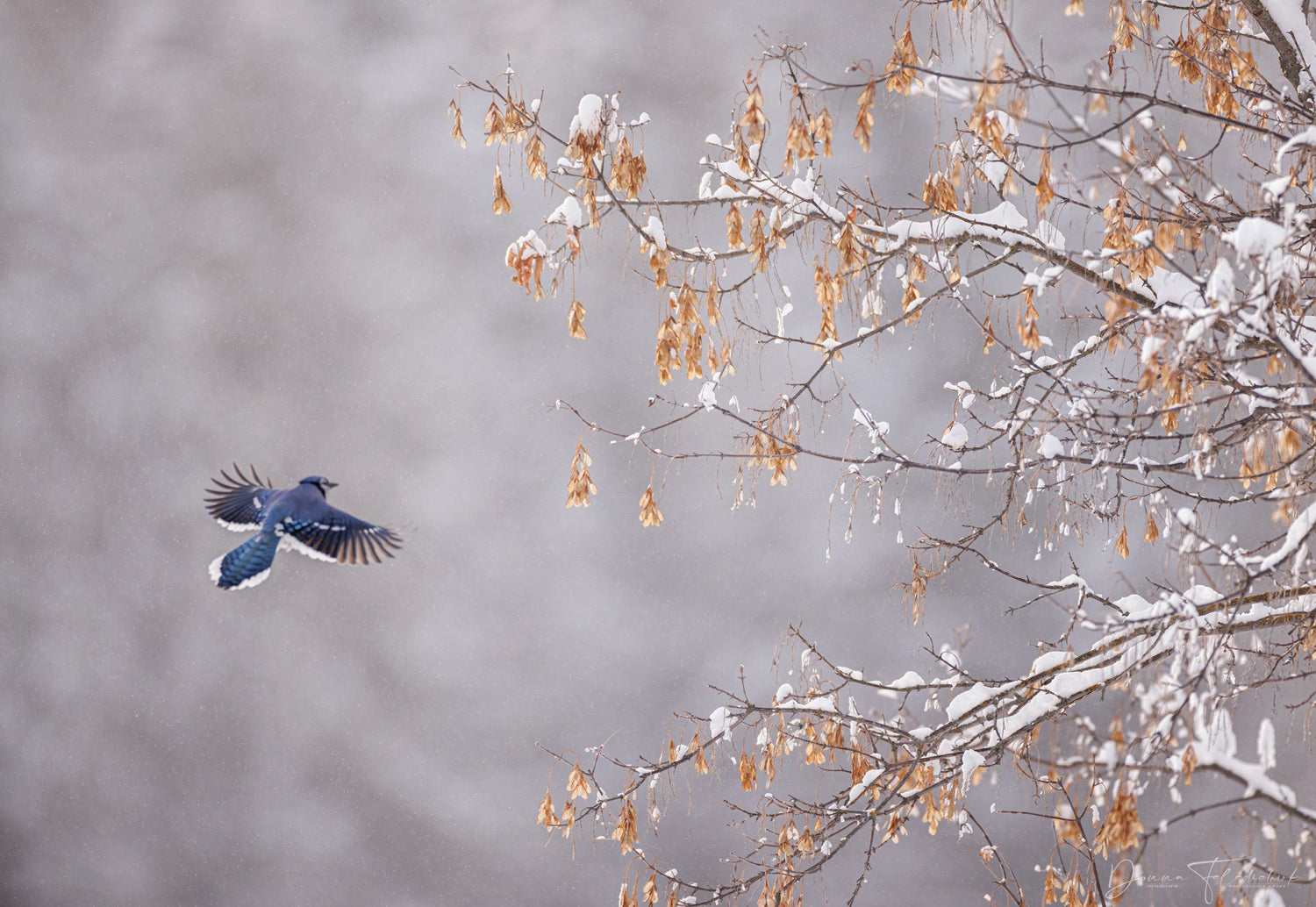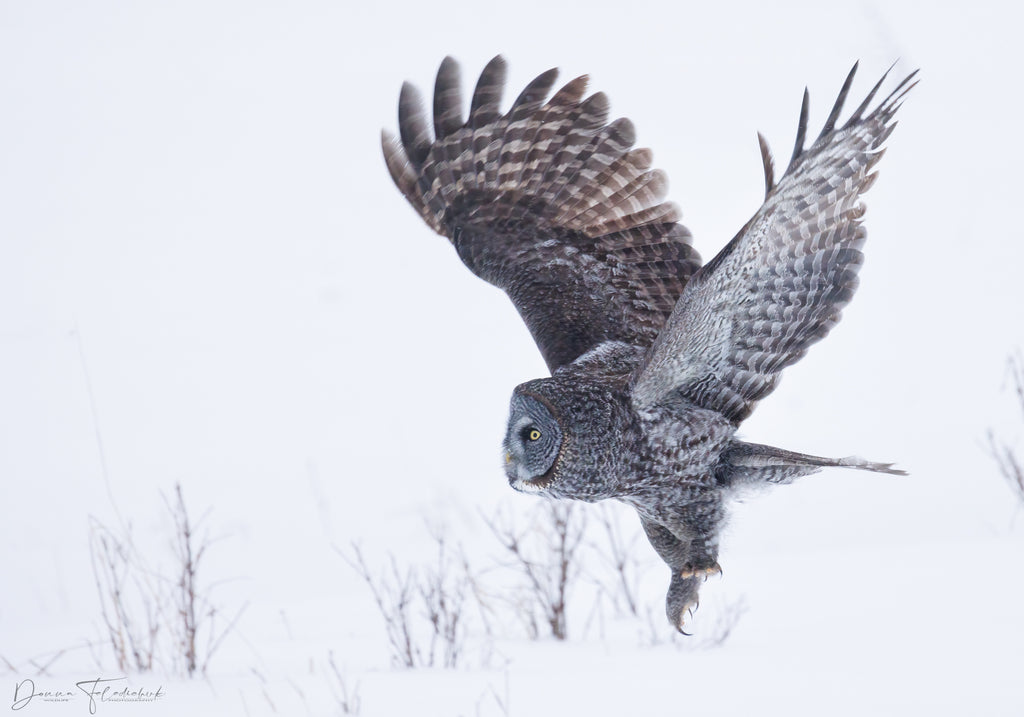
Mastering Winter Wildlife Photography: Embrace the Cold
A blue jay coming in for a landing on a snow-covered tree
In the realm of winter photography, the ethereal beauty of snow-laden landscapes, the delicate hoar frost embellishing trees, and the visible breath of subjects create a captivating tableau. While the winter season provides an opportune canvas for crafting stunning photographs, it is not without its challenges. Navigating the intricacies of cold weather photography demands a nuanced understanding of various factors to achieve success.One pivotal consideration is the impact of cold temperatures on equipment. The rapid depletion of batteries in frigid conditions necessitates robust weatherproofing and well-sealed equipment. Heat shimmer can adversely affect photo quality and furthermore, extreme temperature differentials, such as transitioning from a warm environment to the biting cold, or vice versa, can give rise to condensation-related issues, posing a potential threat to camera and lens integrity.
 A moose shaking off snow in the wintertime
A moose shaking off snow in the wintertime
In the unforgiving cold, batteries succumb swiftly. Effectively extending their lifespan involves keeping them as warm as possible. Storing batteries in inner pockets close to the body proves effective in maintaining optimal temperature. Prudent power management, such as turning off the camera when not actively shooting, becomes imperative, especially given the accelerated battery drain during video recording in cold climates.
 A porcupine on winter's walk
A porcupine on winter's walk
The shift between warm and cold environments introduces its own set of challenges. The potential deterioration of image quality, manifesting as soft images during winter, is often perplexing. Differences in density between warm air trapped in the lens hood and the cold air outside can prevent the ability to obtain sharp images, akin to a heat shimmer effect. Preventing this requires either removing and reattaching the lens hood to release trapped warm air or allowing cold air to circulate within the hood by briefly swinging the camera.
 A great gray owl hunting in wintertime
A great gray owl hunting in wintertime
Returning indoors after extended exposure to extreme cold poses a risk of condensation formation on the camera and lenses. Mitigating this risk demands a gradual reintroduction of the camera to warmer temperatures. Techniques such as adjusting the vehicle's heating gradually during transit or strategically placing the camera in areas with incremental temperature changes help prevent condensation-related damage.
 A blue jay on a snowy day
A blue jay on a snowy day
In the winter wilderness, certain shots stand out amidst the extreme cold and snowy conditions. Species like the red fox, adorned in a vibrant coat against the white backdrop, make for striking subjects. Animals with darker coats, such as great gray owls, bison, moose, and pine martins, create a captivating contrast against the snow. Additionally, capturing the breath of an animal against a dark background in cold weather adds a unique and visually compelling dimension to winter photography.
 A red fox in a snow cave
A red fox in a snow cave
The pinnacle of winter subjects, in my humble opinion, is the majestic bison. These creatures, standing stoically in the snow or leisurely grazing, lend themselves to dramatic photographs. The interplay of their almost black fur against the pristine white landscape creates images that effortlessly translate into stunning black-and-white compositions.
 The breath of an elk visible on a cool morning
The breath of an elk visible on a cool morning
Embracing the winter months for wildlife photography becomes a passion for those residing in regions with prolonged snowy seasons. Leveraging the challenges of cold and snow, photographers have the opportunity to capture extraordinary moments and create truly remarkable images.
Want to get some quick pointers, consider booking a one-on-one coaching call.

